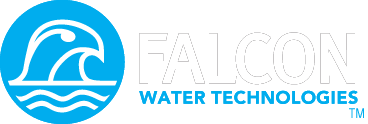Californians are well aware of the current drought.
Even though we are constantly being reminded of the situation, it can seem overwhelming to try to understand the drought in a broader prospective and see the potentials for urban conservation and efficiency. Improving water-use is a key solution for the state’s short-term and long-term water challenges. From drought to unsustainable groundwater usage, California has a long list of water dilemmas, and there remains a tremendous untapped potential to increase efficiency. At home, in businesses, and in government.
Let’s start with recognizing where water use in urban areas come from. According to the California Department of Water Resources, cities and suburbs account for one-fifth of water withdrawals in current years. Mostly used in and around our homes, with residential water use accounting for 64 percent of total urban use. In addition, institutions, schools, hospitals and commercial buildings account 23 percent, leaving 6 percent to industry and manufactures. Even though, agriculture uses large amounts of water, when taking into consideration an urban largely populated area, homes and businesses are the real issue.
About half of California’s urban water use is outdoors, largely for watering landscapes, washing cars or sidewalk, and filling pools or spas – 70 percent in residences and 30 percent in commercial businesses. You can see the rates go up the further inland you go. There the weather is hot, dry and sometimes water is inexpensive. In more saturated areas such as Los Angeles County and the Bay Area, there are a number of aggressive water conservation campaigns. With that in state, the average per capita water use is low, and continues to decline as the drought prolongs itself.
After pinpointing how and where water is consumed, we are able to quantify the potential for improving the way we use the natural resource. There are plenty of new technologies and practices available in the marketplace as well as government policies and initiatives to tap into. Even though behavioral changes influence water savings, we like to focus on technological solutions. Education and awareness is always necessary. It comes hand in hand with change and offers a better landscape for implementing new solutions. So let’s not leave that aside even though our focus is on technological solutions.
First off, there are many ways to reduce water waste and improve efficiency at home. Over the past decade, we have seen homeowners paying more attention to leaks, upgrading old toilets to flow flow models, switching washing machines for ones with the EPA Water Sense labels on them. That includes, faucets and dishwasher as well. As for the outdoor usage, Californians have starting opting for water efficient plants, however there is still a lot that can be done! When it comes to commercial buildings most measures mirror residential conservation efforts, like installing waterfree urinals and low-flow toilets. However, some industries need to take a more specific look on certain aspects of the business. If you’re in the food industry, pre-rinse spray valves, ice machines, food steamers,etc would be your best bet. Office and commercial buildings should also focus on cooling and heating systems. They have the biggest potential for saving and there are plenty of new technology available for retrofitting.
Drought is always an opportunity to initiate clarification. The main issue we face, isn’t the drought itself but our perception of water use is the real problem. As important as water is to us, it is extremely easy to assume that our supplies are both reliable and plentiful. In spite of that, with recent changes that does not seem to be the case. Not only do we have to use less water in our day-to-day life, but we have to think of becoming more water efficient. There remains a tremendous untapped potential to increase water-use efficiency at home and at our businesses. It takes time, and a little bit of understanding. Nonetheless, we are in this together and creating healthy discussions is what will help us move forward.
If you want to continue the conversation head on over to our twitter account! Our handle is @shuttheflushup. Not an easy one to forget!

